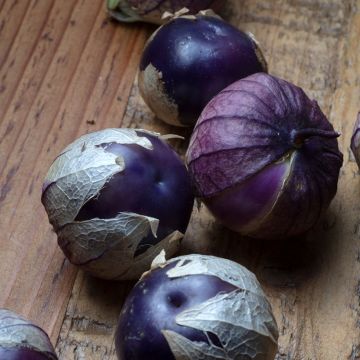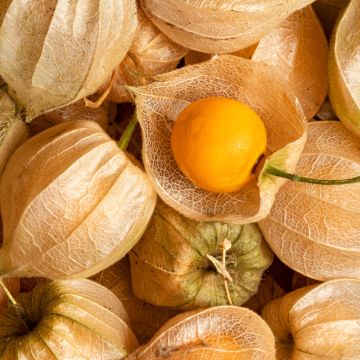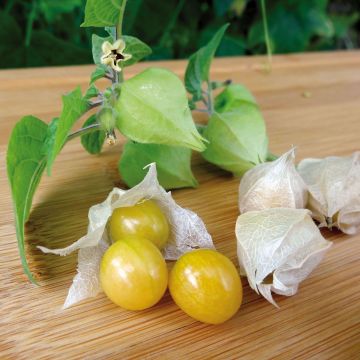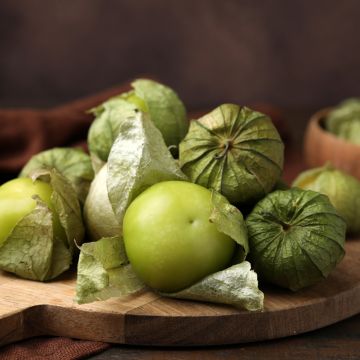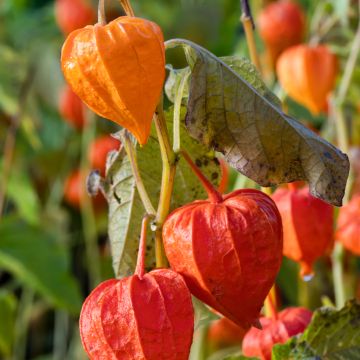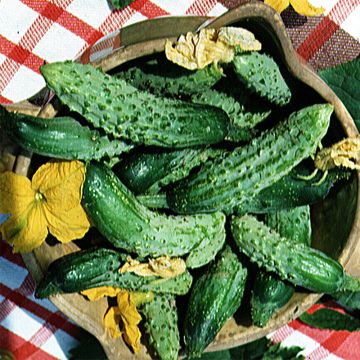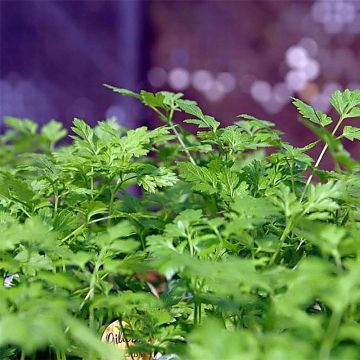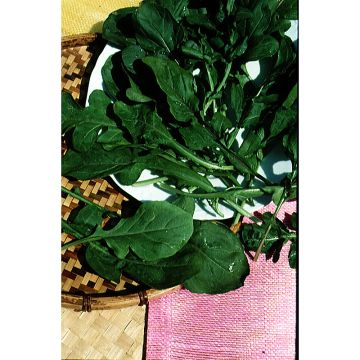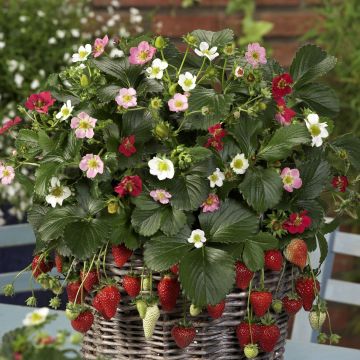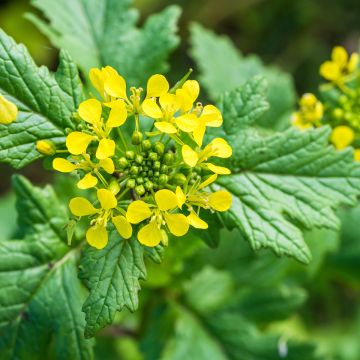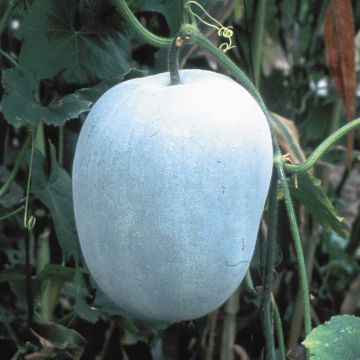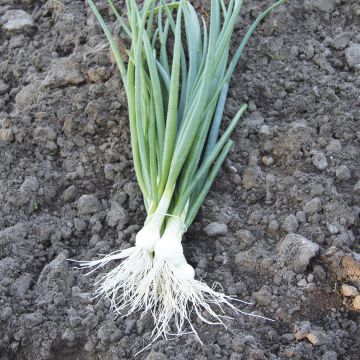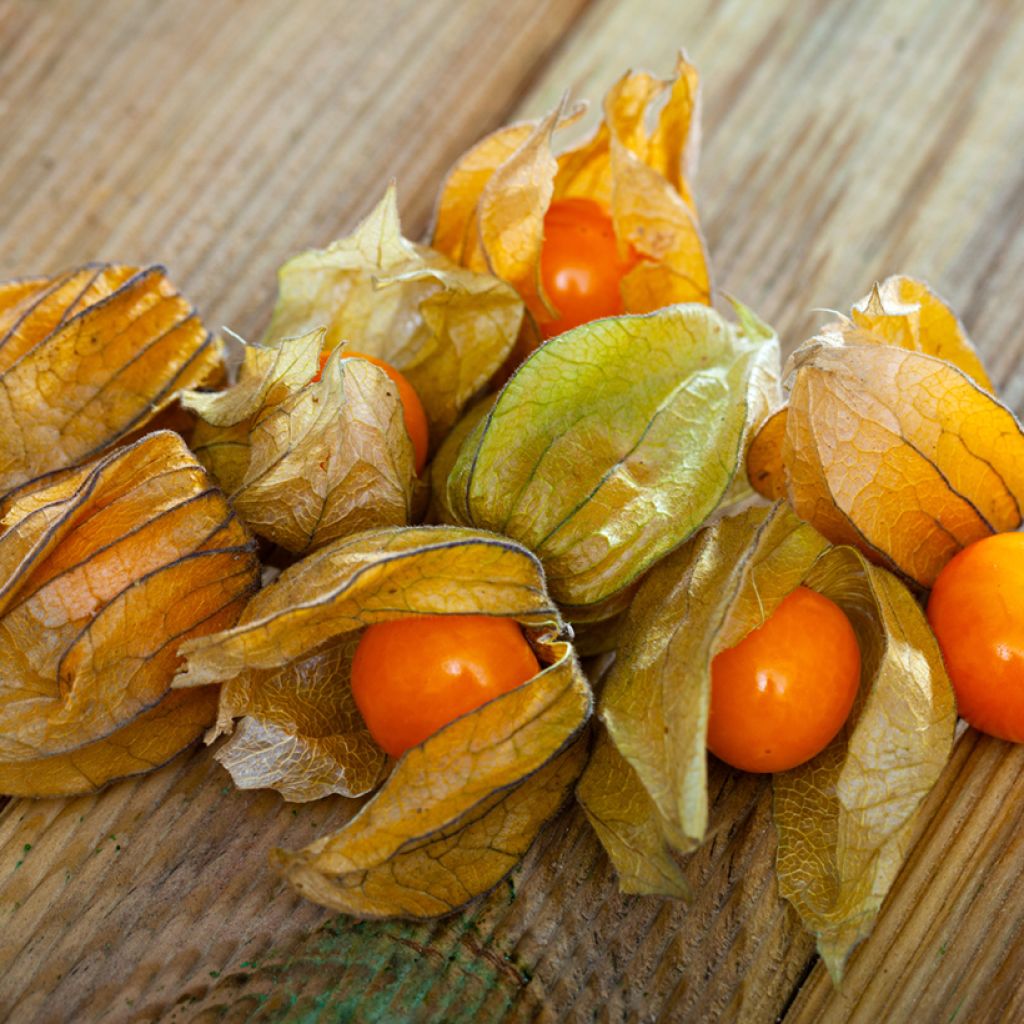

Physalis peruviana seeds
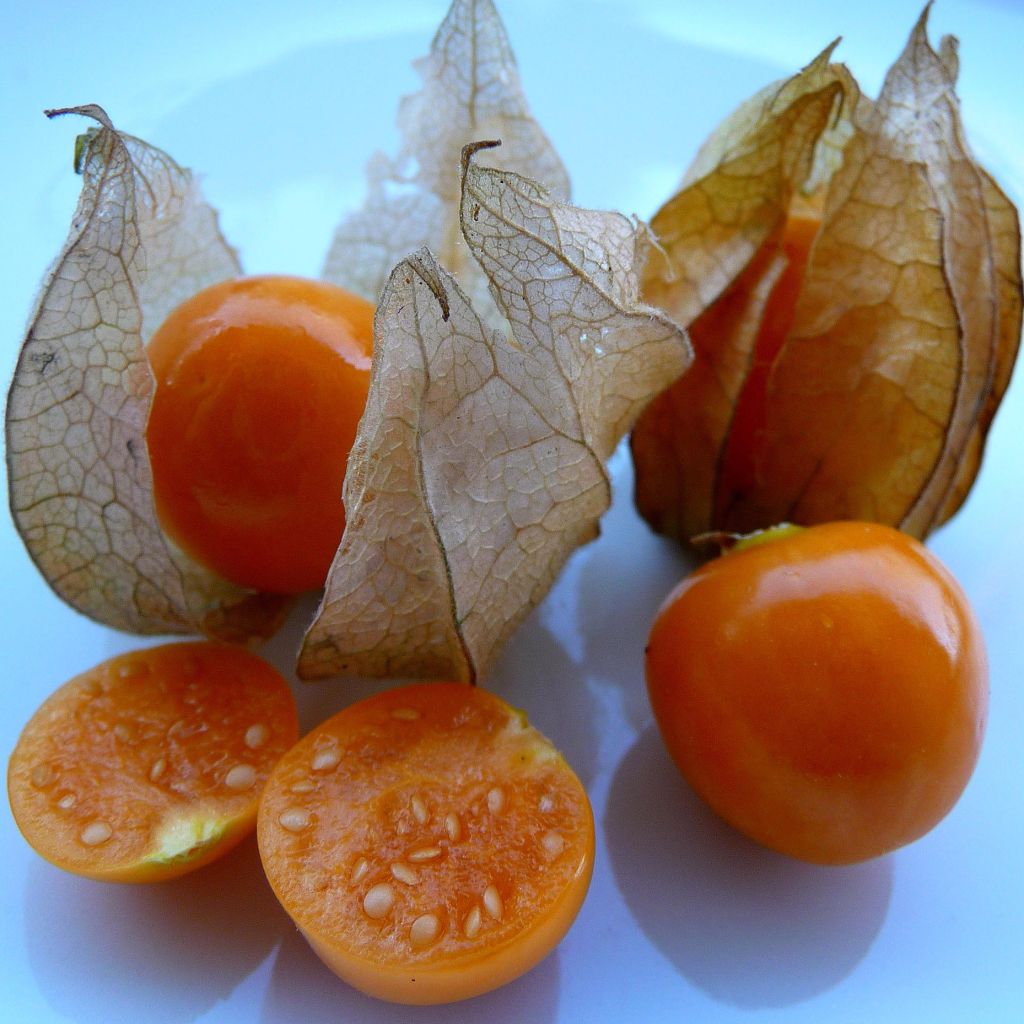

Physalis peruviana seeds
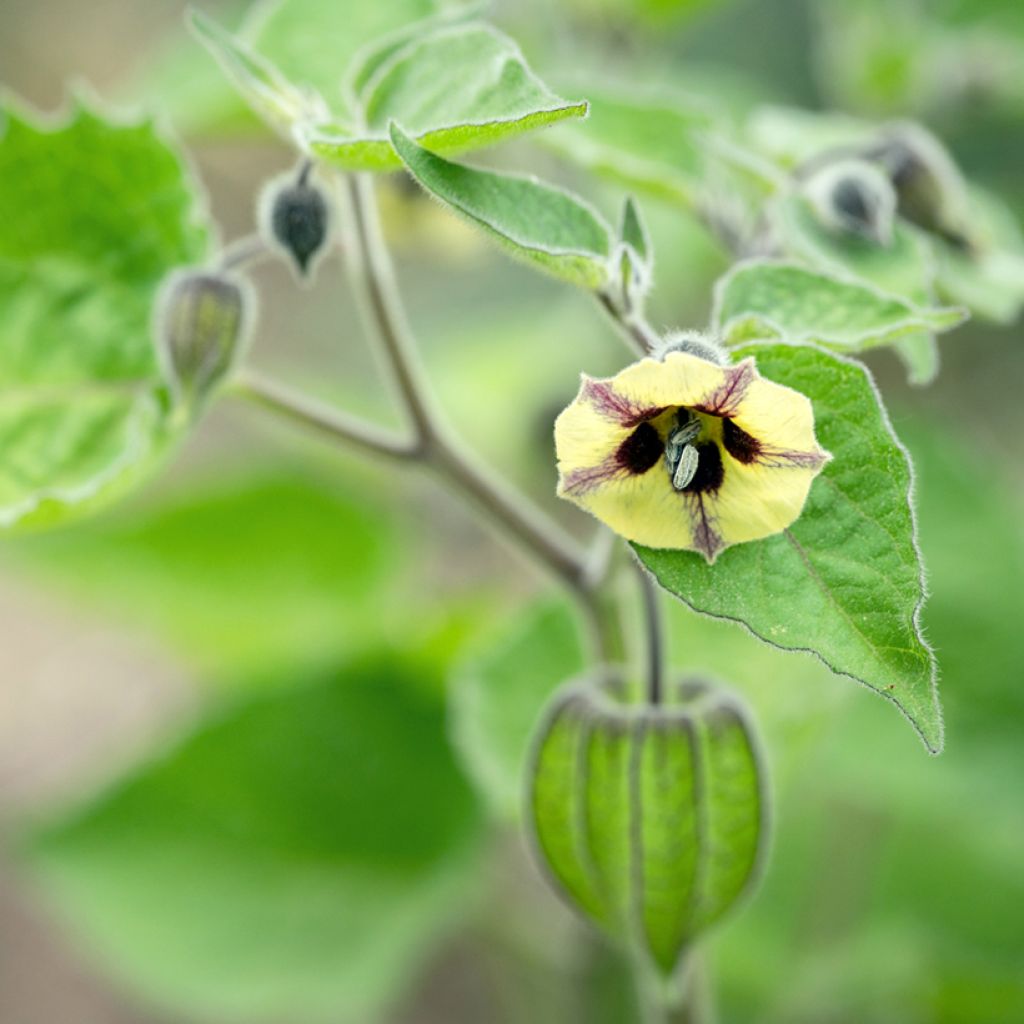

Physalis peruviana seeds
Physalis peruviana seeds
Physalis peruviana
Cape gooseberry, Peruvian ground cherry, goldenberry
Small first-year yield. The fruits are delicious, although a bit small. Drought-resistant with regular watering. Looking forward to the next yield.
Nathalie F., 05/11/2020
This item cannot be shipped to the selected country
Dispatch by letter from €3.90
More information
Dispatch by letter from €3.90
More information
Schedule delivery date,
and select date in basket
This plant carries a 6 months recovery warranty
More information
We guarantee the quality of our plants for a full growing cycle, and will replace at our expense any plant that fails to recover under normal climatic and planting conditions.
Seed-only orders are dispatched by sealed envelope. The delivery charge for seed-only orders is €3.90.
Description
Physalis or Peruvian Groundcherry is native to South America (Peru, Chile, Colombia) and has acclimatised in many areas such as South Africa or Australia. It has small yellow to bright orange fruits nestled in a calyx shaped like a Chinese lantern.
The fruit has a slightly acidic flavour and resembles a tangerine. In this particular variety, it can grow to the size of a large cherry or even a small apricot.
The exotic silhouette of the calyx once again proves that a vegetable garden can be both productive and attractive. Sow from May to July and harvest from August to October.
The Groundcherry or Physalis belongs to the Solanaceae family and produces trailing stems. It blooms in summer, and from September to October it produces fruits that resemble coral-coloured paper lanterns. As the calyx dries it will reveal its veins and give a lace-like effect, then showing the fruit inside: a treasure in a case... or a cage. They contain a multitude of small seeds that self-sow from year to year. Today, physalis are used as decoration on pastries, as well as in compotes, jams, clafoutis, and in more savoury preparations like the Mexican sauce Salsa verde. It is well-known in herbal medicine for its depurative and antioxidant qualities. Be careful, the berries are toxic when eaten green!
Harvesting: Physalis peruviana can be harvested as early as August when the fruits have taken on their beautiful golden yellow colour and the calyx is papery. One plant can yield 250 to 300 fruits.
Storage: Physalis fruits are generally eaten fresh. They can be stored for a few days in the vegetable compartment of your refrigerator. They can also be dried. To achieve this, keep them in a dry and well-ventilated place, without touching each other where they can be stored for a few months.
Gardener's tip: Physalis can sometimes be prone to whitefly infestations. These small insects, from the same family as aphids, are only a nuisance if they are too numerous. A peppermint infusion or even a spray of water mixed with soap will get rid of them without resorting to chemicals. Natural predators of aphids, such as ladybugs or lacewings, should be encouraged.
Physalis peruviana seeds in pictures


Harvest
Plant habit
Foliage
Botanical data
Physalis
peruviana
Solanaceae
Cape gooseberry, Peruvian ground cherry, goldenberry
West Asia
Annual
Other Physalis seeds
View all →Planting and care
Location: Physalis originates from tropical regions but has adapted remarkably well to temperate regions. However, it has retained its preference for heat and sunlight from its origins and it is sensitive to cold. It is not hardy, withers with temperatures below 10°C (50°F) and dies below freezing. Therefore, choose a location where it can benefit from maximum hours of sunlight.
Sowing in buckets: From March to May, fill pots or trays with seed compost and place your seeds, lightly pressing them down. Then cover them with a covering of the same soil. Water with a rose. Germination takes some time, but when the seedlings have reached 3 to 4 leaves, you can transplant them into a larger container or plant them in the ground once frost is no longer a concern.
Sowing in the ground: Sow in place when the soil is well warmed from May to July, burying the seeds half a centimetre deep, 30 cm (12in) apart. The ideal temperature is 19°C (66.2°F). Water with the sprinkler head or a rose. Patience is required as the seedlings only appear after three weeks. When they have 3 to 4 leaves, thin them out, leaving only the strongest plants and spacing them 90 cm (35in) to 1 m (3ft) apart in all directions. Water regularly to obtain beautiful bushes.
As a reminder, the Physalis can become invasive in regions with mild winters. Flowering occurs in August and fruiting from September to October.
Seedlings
Care
Intended location
Vegetable seeds
Haven't found what you were looking for?
Hardiness is the lowest winter temperature a plant can endure without suffering serious damage or even dying. However, hardiness is affected by location (a sheltered area, such as a patio), protection (winter cover) and soil type (hardiness is improved by well-drained soil).

Photo Sharing Terms & Conditions
In order to encourage gardeners to interact and share their experiences, Promesse de fleurs offers various media enabling content to be uploaded onto its Site - in particular via the ‘Photo sharing’ module.
The User agrees to refrain from:
- Posting any content that is illegal, prejudicial, insulting, racist, inciteful to hatred, revisionist, contrary to public decency, that infringes on privacy or on the privacy rights of third parties, in particular the publicity rights of persons and goods, intellectual property rights, or the right to privacy.
- Submitting content on behalf of a third party;
- Impersonate the identity of a third party and/or publish any personal information about a third party;
In general, the User undertakes to refrain from any unethical behaviour.
All Content (in particular text, comments, files, images, photos, videos, creative works, etc.), which may be subject to property or intellectual property rights, image or other private rights, shall remain the property of the User, subject to the limited rights granted by the terms of the licence granted by Promesse de fleurs as stated below. Users are at liberty to publish or not to publish such Content on the Site, notably via the ‘Photo Sharing’ facility, and accept that this Content shall be made public and freely accessible, notably on the Internet.
Users further acknowledge, undertake to have ,and guarantee that they hold all necessary rights and permissions to publish such material on the Site, in particular with regard to the legislation in force pertaining to any privacy, property, intellectual property, image, or contractual rights, or rights of any other nature. By publishing such Content on the Site, Users acknowledge accepting full liability as publishers of the Content within the meaning of the law, and grant Promesse de fleurs, free of charge, an inclusive, worldwide licence for the said Content for the entire duration of its publication, including all reproduction, representation, up/downloading, displaying, performing, transmission, and storage rights.
Users also grant permission for their name to be linked to the Content and accept that this link may not always be made available.
By engaging in posting material, Users consent to their Content becoming automatically accessible on the Internet, in particular on other sites and/or blogs and/or web pages of the Promesse de fleurs site, including in particular social pages and the Promesse de fleurs catalogue.
Users may secure the removal of entrusted content free of charge by issuing a simple request via our contact form.

































